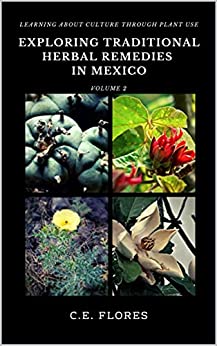
The Aztec marigold (Tagetes erecta) is known as cempasúchil in Mexico. The name comes from the Nahuatl cempohualxochitl which translates as “20 flowers”, possibly referring to the fact that each blossom has the potential to create 20 or more flowers, although some sources reference the ritualistic significance of the number 20, so there maybe be other reasons for this name.
This aromatic flower is native to Mexico and has a long history of medicinal and ritualistic use. Even today, this flower dominates the festival Dia de Los Muertos (Day of the Dead). It is believed that the strong scent will call to the spirits that are roaming free and guide them home to visit loved ones. This use has given the cempasúchil another name, Flor de Muertos (Flower of the Dead).
The Mayan had similar beliefs. The priests would wash their hands and face with an infusion of leaves and flowers before calling the spirits.
There is a legend that describes the love of Xóchitl and Huitzilin. Their feelings were so strong that when Huitzlin died in battle, the sun god Tonatiuh heard the pleas of Xóchitl to reunite them. He transformed Xóchitl into the cempohualxochitl flower. Huitzlin, who had been reincarnated in the form of the hummingbird, forever after found nourishment among her “20 flowers.”
Francisco Hernández described the common use of the cempasúchil in the Historia Natural de la Nueva España like this:
“Tienen todas hojas como de tanaceto, flores amarillas, o amarillas con algo de bermejo, de temperamento caliente y seco en tercer grado, sabor acre, partes sutiles y olor un tanto fuerte. Tiene virtud resolutiva y aperitiva; el jugo de las hojas tomado o las mismas hojas machacadas y tomadas con agua o con vino atemperan el estómago frío, provocan las reglas, la orina y el sudor, alejan los fríos de las intermitentes untadas un poco antes del acceso, quitan la flatulencia, excitan el apetito venéreo, curan la debilidad que proviene de destemplaza fría del hígado, abren las vías obstruidas, aflojan los miembros contraídos, alivian la hidropesía, provocan vómito tomadas con agua tibia, y curan los fríos de las fiebres y aun las fiebres mismas evacuando la causa por la orina y el sudor.”
Historia Natural de la Nueva España, Volume II. Book IV, CLXXIX
Loosely translated, it reads:
“They all have leaves like tansy, yellow flowers, or yellow with some red, hot-tempered and dry in the third degree, pungent taste, subtle parts, and somewhat strong smell. It has a decisive and aperitive virtue; the juice of the leaves drunk or the same leaves crushed and drunk with water or wine temper the stomach, provoke menstruation, urine and sweat, remove intermittent shivers by smearing a little near body cavities, rid the body of flatulence, they excite the venereal appetite, they cure the weakness that comes from the dislocation of the liver, they open the clogged passageways, they loosen contracted limbs, they relieve dropsy, they provoke vomit when drunk with lukewarm water, and they cure shivering of the fevers and even the fevers themselves evacuating the cause of urine and sweat.”
Strange 15th-century disorders aside, like the floating liver, the cempasúchil has been shown to be effective in the majority of the ailments Hernández listed and continues to be an important ingredient in many natural remedies in Mexico today.
Traditionally, the cempasúchil has been used to treat intestinal parasites. Drink 3 cups of a tea made from a pinch of flower petals and 1 / 4 liter of water. The flowers also have anti-inflammatory properties.
A diluted, lukewarm tea is given to babies with colic commonly called empache. The flowers have spasmolytic properties which help soothe the bellyache and reduces fussiness.
An infusion or tincture of the flowers is also used to treat susto or espanto which are nervous conditions. The compounds in the flowers have a sedative effect.
Both antioxidant and antibacterial, the cempasúchil has traditionally been used for wound care. The flowers are crushed into a poultice and can be applied directly to the injury or sore. The crushed leaves are used to treat boils and burns which aids in healing.
In the Yucatan, Tabasco, Oaxaca, and Veracruz, the cempasúchil is used to treat fever. Extracts from the plant are applied in a tincture to the bottom of the feet to provoke perspiration and sweating. In Guerrero and Tabasco, the plant is used to treat colds.
The petals are edible and have anti-aging properties, so go ahead and sprinkle some on your salad. Or you could this chicken in marigold sauce recipe or one of the dishes in the video below.
This versatile plant is also a boon to the gardener, being a natural insect repellent. Crushed petals rubbed on your skin will repel mosquitos.
The petals make a non-toxic dye. In Mexico, dried and powdered petals are fed to chickens so that their skin and eggs are yellower. There is also a cempasúchil pulque (moonshine) made in some areas.
All in all, there is more than one reason to have cempasúchil in your herbal repertoire.
***
Interested in natural remedies? Uncover herbal remedies from traditional Mexican sources for healing and wellness in the Exploring Traditional Herbal Remedies in Mexico series.



